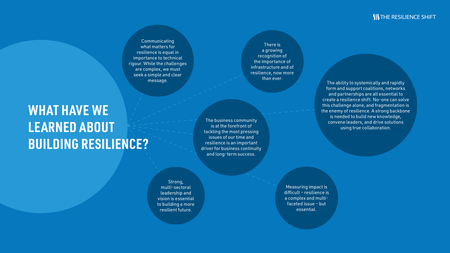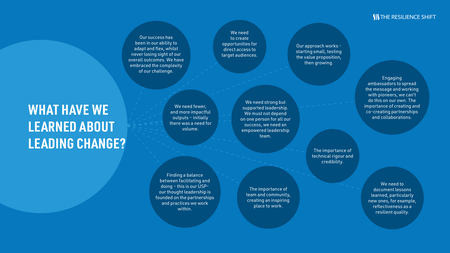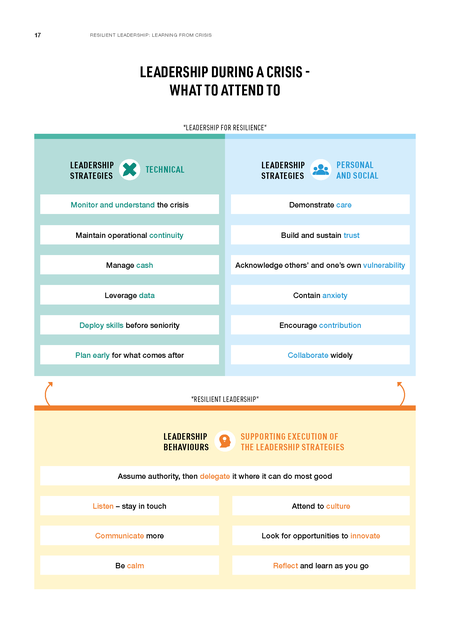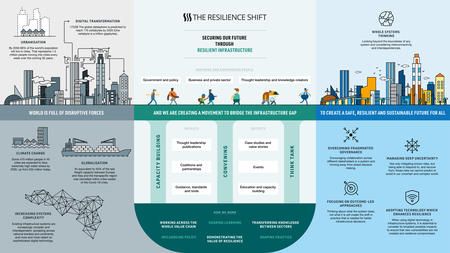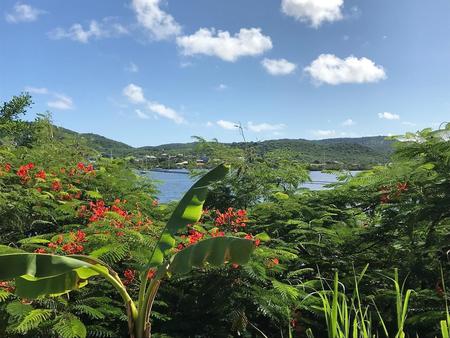
The world is already experiencing changes in average temperature, shifts in the seasons and an increasing frequency of extreme weather events and other climate change impacts. The faster the climate changes, and the longer adaptation efforts are put off, the more difficult and expensive it could be.
It is vital that both governments and businesses grasp this urgency and take action now to build up climate resilience. However it is clear that changes are happening, here and now. Small nations and those in the Global South are particularly vulnerable to the effects of climate change, and may lack the financial and technical resources to take the action needed to adapt.
Our Resilience program is now calling on national government, particularly those in developed countries, to deliver on their adaptation commitments – including by doubling finance for adaptation by 2025 based on 2019 levels. This is not a situation that can be ignored, and urgent action is needed to protect the world’s most vulnerable from the damaging impacts of climate change.
Here are some resources:
Read
How to make infrastructure more resilient against climate change
As the planet heats up, the scale, scope, and severity of climate impacts will increase, adding pressure to key infrastructure systems that are already stretched. These challenges, coupled with aging infrastructure and underinvestment, are already having devastating consequences for communities around the globe.
For five years The Resilience Shift has been a go-to source for high quality and influential advice on all matters related to the resilience of infrastructure systems. The Resilience Shift’s ‘Five Year Review – A celebration’ publication outlines the impact this work has had on infrastructure, engineering and climate change adaptation. Many of the insights and initiatives showcased in the report will continue in the work of the Resilience Rising consortium.
The opportunity to invest in sustainable and resilient urban infrastructure
Scaling up and improving urban infrastructure can deliver considerable social, economic and environmental benefits. Yet, there is a significant gap between identifying projects for climate action and sustainable development and bringing such projects to fruition. The International Coalition for Sustainable Infrastructure is a member of the Resilience Rising consortium.
Key role of ports in unlocking investment in future fuel infrastructure
A study by Arup, Lloyd’s Register (LR) and The Resilience Shift has outlined the critical role of ports in driving and supporting the case for investment in energy infrastructure. It focuses on the integration of fuel demand for early adopters in green corridors, ports, and energy systems. The Resilience Shift is a member of the Resilience Rising consortium.
The Race to Resilience is the UN-backed global campaign to catalyze a step-change in global ambition for climate resilience, putting people and nature first in pursuit of a resilient world where we don’t just survive climate shocks and stresses, but thrive in spite of them.
RegionsAdapt mobilizes ambition and action on climate adaptation by facilitating access to the latest innovations, tools and best practices at regional level throughout the world. Through knowledge sharing, capacity building, adoption of common standards, and contribution to the global processes, this unique regional partnership catalyzes innovation on climate adaptation, fosters cooperation and supports regional governments improve their resilience.
Developing and Accelerating Procurement Practices to Enable Sustainable and Resilient Infrastructure
Green Recovery and Finance for Sustainable Infrastructure
Pushing the Boundaries of Innovation in Sustainable and Resilient Infrastructure
Five Year Review – A celebration
Port energy supply for green shipping corridors
COP26 Resilience Hub Synthesis Report – Key messages and future directions
Governance of Infrastructure for Resilience
Resilience4Ports: Gateways to a resilient future
Decarbonisation and the role of technology
Watch
Current approaches to designing infrastructure makes assumptions about the future and these assumptions often do not adequately acknowledge the uncertainty associated with the future operation of the systems. Our assumptions about “what are the chances” shape our thinking about the future and how we should prepare for it. The episode establishes broad definitions of risk, uncertainty and resilience – and how these definitions shape our approach to making decisions. It describes how we need to think about the future beyond placing probabilities on certain events happening.
Like other regions around the globe, California now faces more frequent and destructive wildfires every year. These events are devastating to communities, causing tragic loss of life, destroying homes and critical infrastructure, and threatening natural ecosystems. If projections in the latest report by the Intergovernmental Panel on Climate Change (IPCC) hold true, communities could face much more destruction in the future.
Southern California’s coasts are on the frontline of climate change. The latest Intergovernmental Panel on Climate Change (IPCC) report confirmed that the region, like other coastal communities, will experience more frequent flooding and increased cliff, bluff, and beach erosion. With beaches and bluffs eroding at an annually accelerating rate, communities and the ecosystems they depend upon face significant risks.
